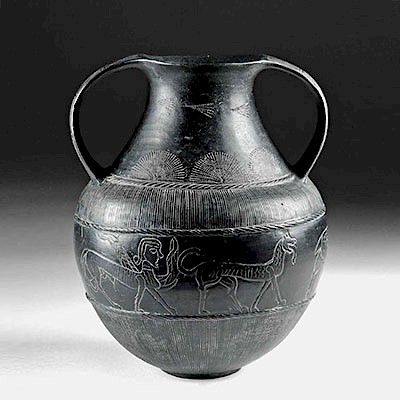Gandharan Schist Relief w/ Buddha and Attendants
Lot 115
About Seller
Artemis Gallery
686 S Taylor Ave, Ste 106
Louisville, CO 80027
United States
Selling antiquities, ancient and ethnographic art online since 1993, Artemis Gallery specializes in Classical Antiquities (Egyptian, Greek, Roman, Near Eastern), Asian, Pre-Columbian, African / Tribal / Oceanographic art. Our extensive inventory includes pottery, stone, metal, wood, glass and textil...Read more
Categories
Estimate:
$2,000 - $3,000
Absentee vs Live bid
Two ways to bid:
- Leave a max absentee bid and the platform will bid on your behalf up to your maximum bid during the live auction.
- Bid live during the auction and your bids will be submitted real-time to the auctioneer.
Bid Increments
| Price | Bid Increment |
|---|---|
| $0 | $25 |
| $300 | $50 |
| $1,000 | $100 |
| $2,000 | $250 |
| $5,000 | $500 |
| $10,000 | $1,000 |
| $20,000 | $2,500 |
| $50,000 | $5,000 |
| $100,000 | $10,000 |
| $200,000 | $20,000 |
About Auction
By Artemis Gallery
Mar 21, 2019
Set Reminder
2019-03-21 10:00:00
2019-03-21 10:00:00
America/New_York
Bidsquare
Bidsquare : Fine Ancient | Asian | Ethnographic Art
https://www.bidsquare.com/auctions/artemis-gallery/fine-ancient-asian-ethnographic-art-3967
Featuring classical antiquities, ancient and ethnographic art from cultures encompassing the globe, plus fine art. Egyptian, Greek, Roman, Etruscan, Near Eastern, Asian, Pre-Columbian, Native American, African / Tribal, Oceanic, Spanish Colonial, Russian, Fine Art, so much more! Artemis Gallery info@artemisgallery.com
Featuring classical antiquities, ancient and ethnographic art from cultures encompassing the globe, plus fine art. Egyptian, Greek, Roman, Etruscan, Near Eastern, Asian, Pre-Columbian, Native American, African / Tribal, Oceanic, Spanish Colonial, Russian, Fine Art, so much more! Artemis Gallery info@artemisgallery.com
- Lot Description
Central Asia, Pakistan, India, and Afghanistan, Gandharan Empire, ca. 1st century CE. A magnificent hand carved Gandharan grey schist relief fragment. At its center is a seated Buddha, flanked by attendants and seated between two Corinthian columns, each of which has been embellished with excellent detail by the artist. The Buddha assumes the meditation mudra and is seated beneath a low canopy. On either side of these columns are two standing Bodhisattvas, each also flanked by attendants. All figures are draped in beautiful robes, some carved with distinctive hairstyles and others shown wearing turbans. This is a significant fragment from an original stone carved relief, perhaps a section of a lower running border. Size: 14.75" W x 5.3" H (37.5 cm x 13.5 cm)
This is a fabulous piece of architectural sculpture, not only for its exquisite Gandharan styling, but also because it includes both a seated Buddha and two standing Bodhisattvas. The term Bodhisattva is derived from the word bodhi which means enlightenment, and a Bodhisattva is an enlightened being who foregoes entering paradise in order to assist others to achieve enlightenment or buddhahood. Bodhisattvas are among the most compassionate beings in the universe, devoting themselves to saving the suffering. They are traditionally depicted as less austere than Buddhas and with graceful postures and elegant garments.
Provenance: private East Coast, USA collection; ex-Tomatsu Miura collection, Japan, acquired in the 1980s
All items legal to buy/sell under U.S. Statute covering cultural patrimony Code 2600, CHAPTER 14, and are guaranteed to be as described or your money back.
A Certificate of Authenticity will accompany all winning bids.
We ship worldwide and handle all shipping in-house for your convenience.
#144427Piece is a fragment from a larger frieze, with rough edges. Small losses from surface, notably one arm of a standing figure and the face of the central Buddha figure. Surface wear commensurate with age. Light deposits on surface, especially in the lower profile areas.Condition
- Shipping Info
-
All shipping is handled in-house for your convenience. Your invoice from Artemis Gallery will include shipping calculation instructions. If in doubt, please inquire BEFORE bidding for estimated shipping costs for individual items.
-
- Buyer's Premium



 EUR
EUR CAD
CAD AUD
AUD GBP
GBP MXN
MXN HKD
HKD CNY
CNY MYR
MYR SEK
SEK SGD
SGD CHF
CHF THB
THB














